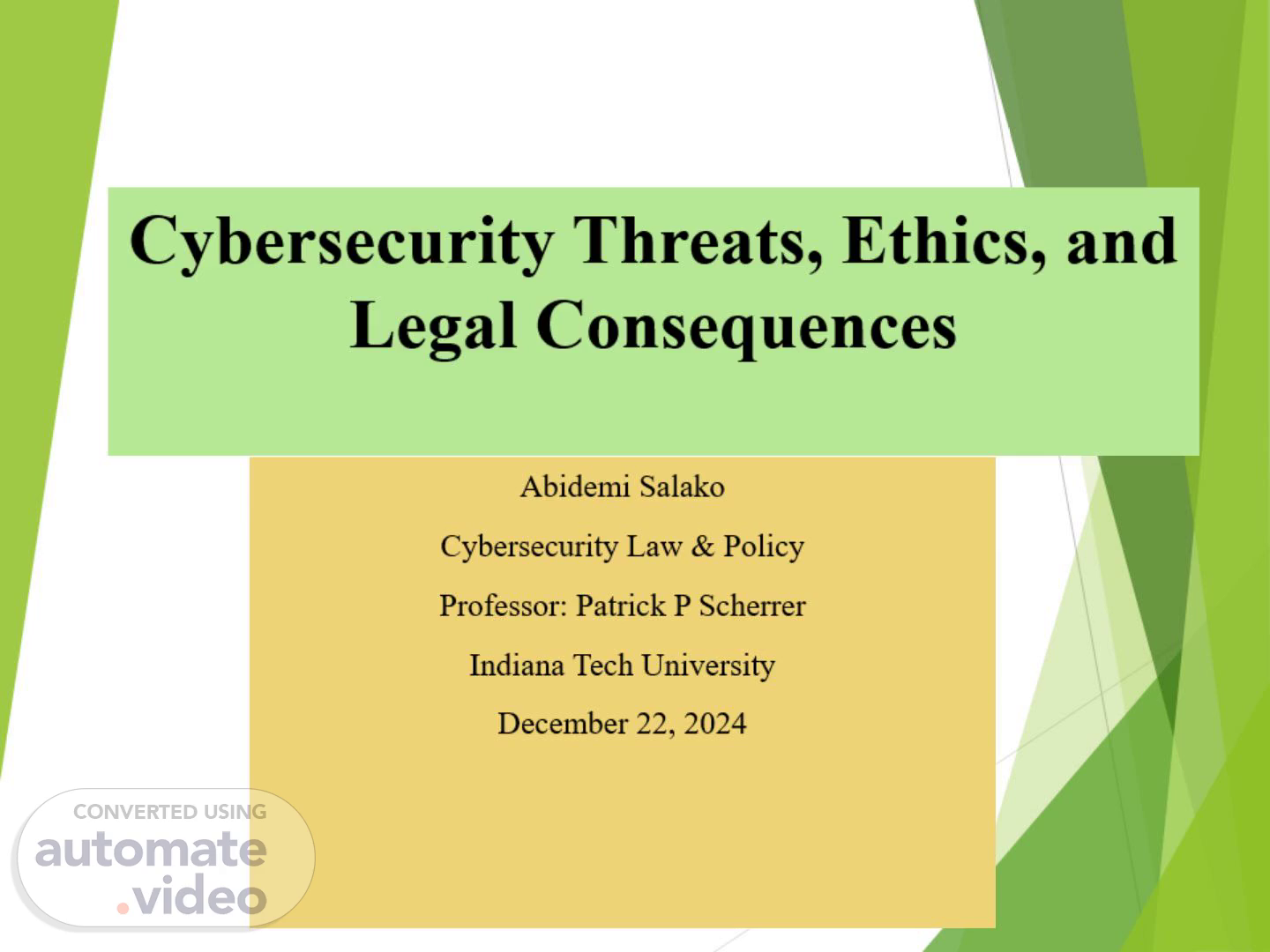Scene 1 (0s)
[Audio] Welcome to this presentation on cybersecurity threats, ethics, and legal consequences. Today, I will classify cybersecurity threats and discuss their impacts, ethics, and legal implications. Let's begin..
Scene 2 (16s)
[Audio] Cybersecurity threats are any malicious activities aimed at disrupting, damaging, or gaining unauthorized access to systems. As technology evolves, the scale and sophistication of these threats also grow, making it crucial to understand and address them proactively..
Scene 3 (34s)
[Audio] Cybersecurity threats can be categorized by their methods and objectives. Understanding these categories helps organizations develop specific strategies to mitigate each type of threat effectively..
Scene 4 (53s)
[Audio] Threat actors range from lone hackers to sophisticated nation-state groups. Their motivations vary, including financial, political, or ideological goals. Recognizing these actors is crucial for implementing effective countermeasures..
Scene 5 (1m 10s)
[Audio] The WannaCry ransomware attack, linked to the Lazarus Group, exemplifies the devastation a ransomware attack can cause. This incident underscores the critical need for regular security updates and patch management..
Scene 6 (1m 25s)
[Audio] Ethics play a significant role in data protection. Organizations face dilemmas such as balancing security with user privacy. Establishing transparent policies and fostering a culture of accountability are essential for ethical cybersecurity practices..
Scene 7 (1m 43s)
[Audio] Unethical practices, such as hiding data breaches or exploiting vulnerabilities, harm trust and security. These actions highlight the need for strict ethical guidelines and accountability in cybersecurity..
Scene 8 (1m 58s)
[Audio] Legal consequences of data breaches include financial penalties, lawsuits, and reputational damage. Regulations like GDPR emphasize accountability, urging organizations to prioritize data protection..
Scene 9 (2m 16s)
[Audio] The Equifax data breach serves as a cautionary tale, illustrating the legal and financial fallout from cybersecurity negligence. This case emphasizes the critical need for timely action on known vulnerabilities..
Scene 10 (2m 33s)
[Audio] Ethical data protection strategies include clear policies, employee training, and leveraging advanced technologies. Transparency in breach disclosure fosters trust and strengthens security measures..
Scene 11 (2m 48s)
[Audio] Regulations like GDPR and CCPA are cornerstones of modern data protection. While compliance can be challenging, these laws are critical for maintaining stakeholder trust and minimizing risks..
Scene 12 (3m 5s)
[Audio] Emerging trends like AI-driven threats and IoT vulnerabilities demand adaptive strategies. Organizations must embrace innovations like zero-trust models while fostering cross-sector collaboration to stay ahead..
Scene 13 (3m 21s)
[Audio] Every individual and organization has a role in strengthening cybersecurity. Staying informed, promoting ethics, and investing in advanced tools are essential steps to mitigate risks and safeguard data..
Scene 14 (3m 36s)
[Audio] Addressing cybersecurity threats requires understanding the actors, ethical considerations, and legal consequences. Thank you for your attention. I am happy to take any questions or hear your thoughts..
